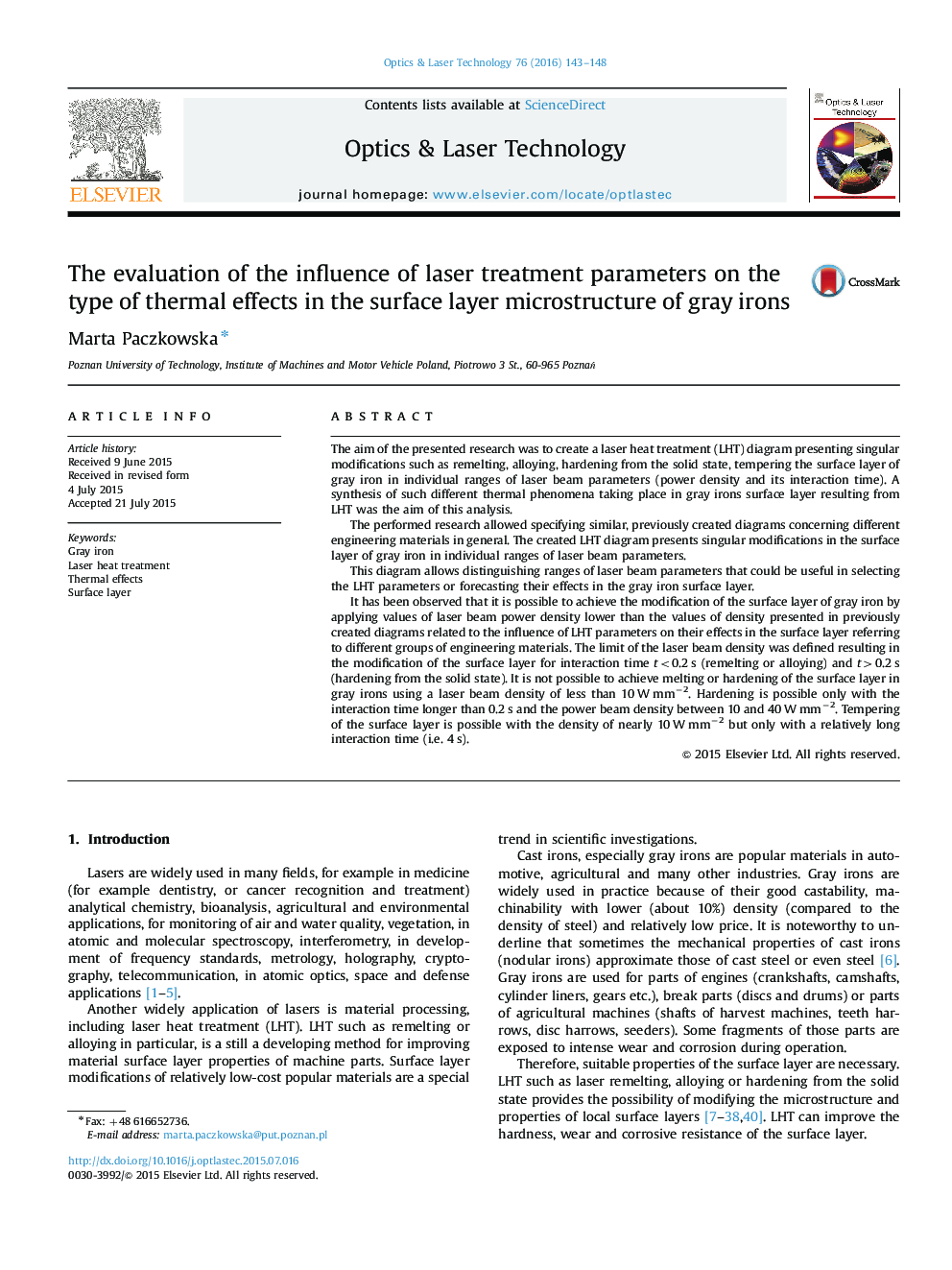| Article ID | Journal | Published Year | Pages | File Type |
|---|---|---|---|---|
| 738967 | Optics & Laser Technology | 2016 | 6 Pages |
•The diagram presents types of laser modifications of the gray iron surface layer.•Laser beam parametersresulting indifferentmodifications have been determined.•Remelting, alloying, hardening and tempering were under consideration.•Created diagram is useful in laser treatment parameters selection for gray irons.
The aim of the presented research was to create a laser heat treatment (LHT) diagram presenting singular modifications such as remelting, alloying, hardening from the solid state, tempering the surface layer of gray iron in individual ranges of laser beam parameters (power density and its interaction time). A synthesis of such different thermal phenomena taking place in gray irons surface layer resulting from LHT was the aim of this analysis.The performed research allowed specifying similar, previously created diagrams concerning different engineering materials in general. The created LHT diagram presents singular modifications in the surface layer of gray iron in individual ranges of laser beam parameters.This diagram allows distinguishing ranges of laser beam parameters that could be useful in selecting the LHT parameters or forecasting their effects in the gray iron surface layer.It has been observed that it is possible to achieve the modification of the surface layer of gray iron by applying values of laser beam power density lower than the values of density presented in previously created diagrams related to the influence of LHT parameters on their effects in the surface layer referring to different groups of engineering materials. The limit of the laser beam density was defined resulting in the modification of the surface layer for interaction time t<0.2 s (remelting or alloying) and t>0.2 s (hardening from the solid state). It is not possible to achieve melting or hardening of the surface layer in gray irons using a laser beam density of less than 10 W mm−2. Hardening is possible only with the interaction time longer than 0.2 s and the power beam density between 10 and 40 W mm−2. Tempering of the surface layer is possible with the density of nearly 10 W mm−2 but only with a relatively long interaction time (i.e. 4 s).
